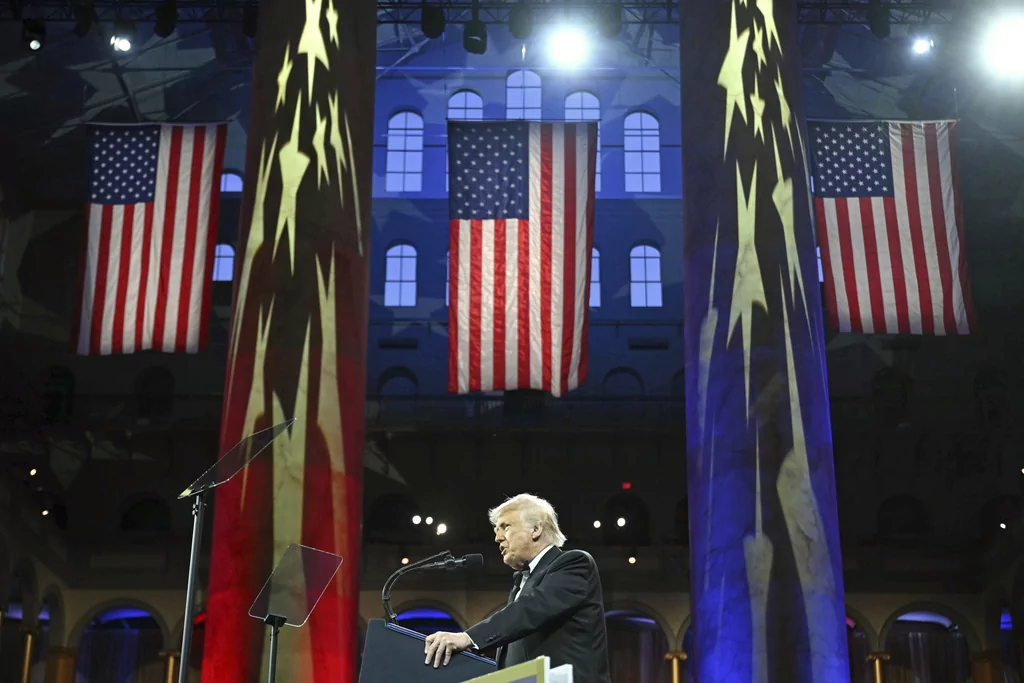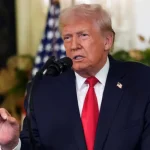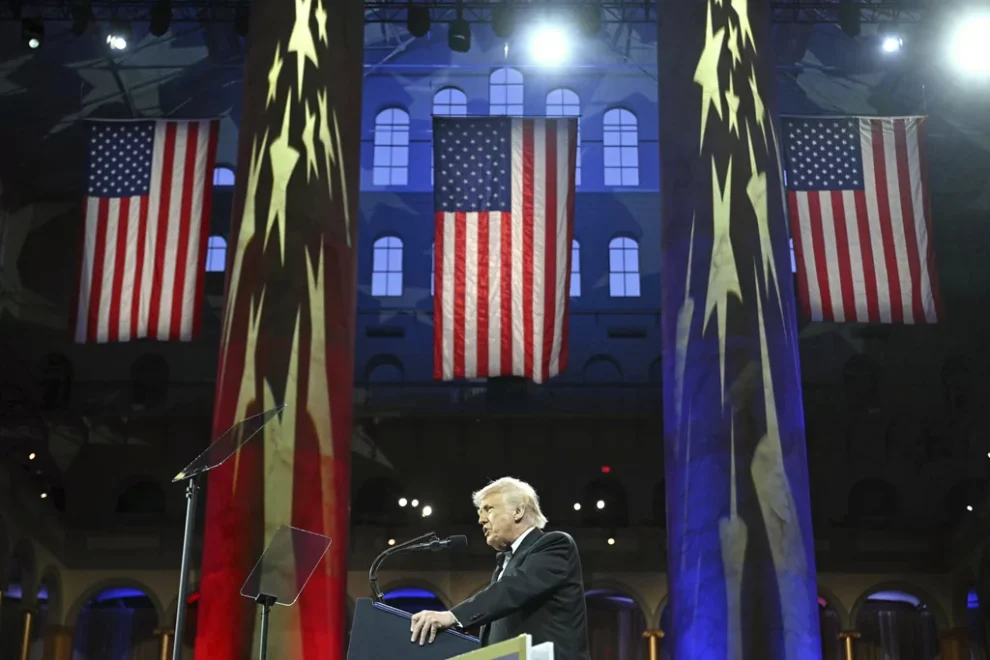President Donald Trump’s wave of tariffs went into effect at 12:01 a.m. Wednesday as the vast majority of U.S. trading partners look to head off the barrier taxes with last-minute deals with the White House.
Trump’s “Liberation Day” announcement outlined a two-phased rollout of the new tariffs, which Trump has described as reciprocal. First, the 10% flat tariff on all trading partners was put into effect over the weekend, with a midnight deadline for “tailored” rates for 86 individual countries.
The new tariff regime, on friends and foes alike, upended years of global trade relationships and prompted rare voices of dissent from congressional Republicans concerned about risks of inflation, recession, and executive overreach.
Trump, however, sought to reassure House Republicans at a fundraising dinner Tuesday night that tariffs will work by bringing countries to the negotiating table.
“I really think we’re helped a lot by the tariff situation that’s going on, which is a good situation, not a bad,” Trump said at a National Republican Congressional Committee dinner. “It’s going to be legendary. You watch — legendary in a positive way.”

In total, Trump lifted the effective U.S. tariff rate to 25%, up from just 2.5% last year, including a 20% rate for the European Union, and 27% for India, 24% for Japan, 26% for South Korea, 32% for Taiwan, and 46% for Vietnam.
China’s effective rate skyrocketed to 104% after Trump delivered Beijing a Tuesday at noon deadline to drop its own newly enacted 34% retaliatory tariffs on U.S. goods.
“I know what the hell I’m doing,” Trump told Republicans Tuesday evening while teasing that more tariffs are coming on pharmaceutical drug imports.
Markets plummeted late last week and continued to slip through Tuesday, but senior White House officials have sought to tamp down on recession fears by pointing to more than 70 trading partners that have opened the door to trade talks since last Wednesday.
Earlier Tuesday, Trump told attendees at a coal-focused executive order signing ceremony that the administration is “doing very well” in those early talks with countries.
“I call them tailored deals, not off the rack,” the president said about the tariffs. “These are tailored, highly tailored deals.”
The president signed an executive order in January directing Commerce Secretary Howard Lutnick to launch an External Revenue Service to oversee tariff revenue collection.
But the White House could not answer questions about the status of the ERS on Tuesday, and the responsibility to enforce and police the president’s new tariffs will fall to U.S. Customs and Border Protection.
CBP officials previously told the Washington Examiner that collecting revenue and enforcing the tariffs would be a “huge task,” and trade experts predicted that attempted tariff evasion would increase after implementation.
“The incentive for cheating is going to go up substantially, especially in the near term,” said Stephen A. Teller, a Seattle-based False Claims Act and whistleblower attorney. “It seems to me that they’re going to miss more fraud over the next little while until more resources are pointed in that direction.”
Still, economic experts maintain that Trump’s tariffs amount to a trillion-dollar tax hike on American households, and recession projections have worsened as the tariffs continue to drive market instability.
Stock woes have even driven a rift through Trump’s close circle of advisers. Elon Musk began publicly lashing out at Peter Navarro, White House senior counselor for trade and manufacturing and Trump’s top tariff hawk, over the weekend and continued to criticize “Retardo” into the week.
WHITE HOUSE TIGHT-LIPPED ON EXTERNAL REVENUE SERVICE ON EVE OF TARIFF IMPLEMENTATION
“Look, these are obviously two individuals who have very different views on trade and on tariffs,” White House press secretary Karoline Leavitt said of the public spat. “Boys will be boys, and we will let their public sparring continue and you guys should all be very grateful that we have the most transparent administration in history.”
























